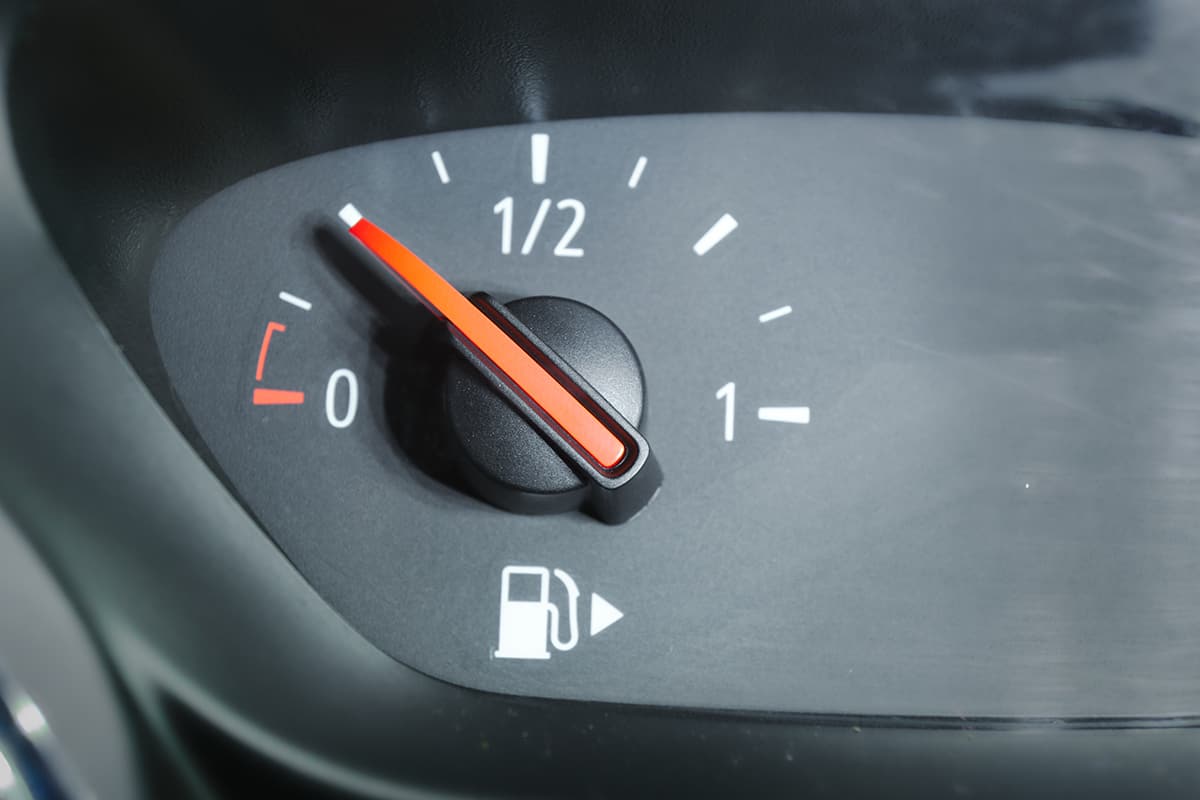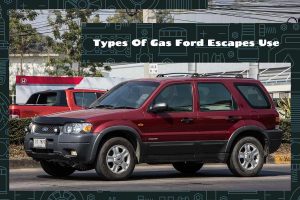There are few things more enjoyable than zooming down the highway in a car, but something that can ruin the part is seeing your car low on gas. Imagine needing to drive 50 more miles to the next gas station while you only have about a quarter-tank of gas left. Will you make it, or does someone need to get out and push?
Generally, a quarter tank of gas is enough to cover a distance of between 100 and 200 miles. However, it ultimately depends on the type of car you’re driving, its fuel tank capacity, and your driving behavior.
In this guide, we’re going discuss what factors contribute to fuel economy, general mileage estimates for different car types, and push your car closer to the 200-mile mark on a quarter tank of gasoline.
Why You Should Know About Your Car’s Mileage
Knowing your car’s mileage is like having a secret weapon in the battle against high gas prices. It’s your key to unlocking the mysteries of fuel efficiency and ensuring that you’re not caught off guard when you’re running low on gas.
Understanding how far you can travel on a quarter tank of gas can save you from embarrassing roadside breakdowns and keep you from feeling like a hapless victim of the gas pump. Plus, by taking steps to improve your car’s mileage, you’ll be doing your part to protect the environment and save money on gas.
What Factors Affect Mileage
Here are some of the most well-known factors that can affect your car’s mileage positively or negatively. There’s quite a lot to unpack, so buckle up!
1. Car make and model
Different car models have varying engine sizes, aerodynamics, and weight, which can affect how much fuel they consume. Generally, smaller and lighter cars tend to be more fuel-efficient than larger and heavier ones. Additionally, newer car models may be designed with more advanced fuel-saving technologies, which can improve their mileage.
2. Car condition
As a car ages, its engine and other components may wear down, reducing its overall performance and gas mileage. Regular maintenance and tune-ups can help mitigate this effect and keep the car running efficiently.
3. Driving habit
Aggressive driving, including speeding, rapid acceleration, and hard braking, can waste fuel and decrease mileage. Additionally, idling for extended periods (PDF) can also lower fuel economy.
4. Road conditions
Driving on hilly or mountainous roads can require more fuel than driving on flat terrain. Driving on rough or unpaved roads can reduce mileage by increasing drag and resistance.
5. Weather

Extremely hot or cold temperatures can reduce a car’s fuel economy by requiring more energy to power air conditioning or heating systems. Driving in strong winds or heavy rain can increase drag and resistance, which can decrease mileage.
6. Cargo weight
Carrying a heavy load can increase a vehicle’s weight, which requires more energy to accelerate and maintain speed, resulting in higher fuel consumption. The type of cargo being carried can also affect fuel economy, as some items may be more aerodynamic or create less drag than others.
7. Tires
Maintaining proper tire pressure is crucial for both fuel efficiency and driving safety. Underinflated tires increase resistance and drag on the road, requiring more energy to move the car and decreasing fuel efficiency. This means that the engine needs to work harder, which can cause premature wear and tear on the vehicle, ultimately resulting in higher repair costs.
8. Air conditioning and other electronics
Air conditioning requires energy to cool the car’s interior, which can reduce mileage by increasing fuel consumption. Similarly, using other electronics such as the radio, headlights, and power windows can require additional energy and reduce fuel efficiency. With all that said, these features use a negligible amount of gasoline, which wouldn’t be so worrisome unless you’re low on fuel.
9. Fuel type
Some types of fuel, such as diesel or ethanol, may have different energy content than gasoline, which can impact fuel consumption and mileage. Additionally, using a lower grade of gasoline than recommended by the manufacturer can result in lower fuel economy.
Estimated Mileage Figures on a Quarter-Tank by Car Model
Below, I’ll provide estimates of how many miles some of the most common cars can travel on a quarter-tank of gas. If you don’t find your car in the following lists, check the owner’s manual (it’s still in your glove compartment, right?) and multiply its miles per gallon (MPG) figure by a quarter of its total tank capacity.
1. SUVs
| Model | Total Tank Size (gallons) | Quarter Tank Size (gallons) | Approximate Travel Distance (City/Highway) |
| Chevrolet Equinox | 14.9 | 3.725 | 93.125/111.75 miles |
| Ford Escape | 14.8 | 3.700 | 103.6/96.2 miles |
| Honda CR-V | 14.0 | 3.500 | 98/119 miles |
| Hyundai Tucson | 14.3 | 3.575 | 85.8/103.675 miles |
| Jeep Grand Cherokee | 24.6 | 6.150 | 116.85/159.9 miles |
| Kia Sorento | 17.7 | 4.425 | 97.35/119.475 miles |
| Mazda CX-5 | 15.3 | 3.825 | 99.45/107.1 miles |
| Nissan Rogue | 14.5 | 3.625 | 108.75/134.125 miles |
| Subaru Outback | 18.5 | 4.625 | 120.25/134.125 miles |
Source: Edmunds.com
2. Sedans
| Model | Total Tank Size (gallons) | Quarter Tank Size (gallons) | Approximate Travel Distance (City/Highway) |
| Honda Accord | 14.8 | 3.700 | 111/125.8 miles |
| Hyundai Sonata | 15.9 | 3.975 | 178.875/202.725 miles |
| Kia Optima | 18.5 | 4.625 | 111/161.875 miles |
| Mazda6 | 16.4 | 4.100 | 106.6/155.8 miles |
| Nissan Altima | 16.2 | 4.050 | 105.3/145.8 miles |
| Subaru Legacy | 18.5 | 4.625 | 124.875/161.875 miles |
| Toyota Camry | 15.8 | 3.950 | 110.6/154.05 miles |
| Toyota Corolla | 13.2 | 3.300 | 99/125.4 miles |
| Volkswagen Jetta | 13.5 | 3.375 | 97.875/145.125 miles |
| Volvo S60 | 15.9 | 3.975 | 99.375/115.275 miles |
Source: Edmunds.com
3. Hatchbacks
| Model | Total Tank Size (gallons) | Quarter Tank Size (gallons) | Approximate Travel Distance (City/Highway) |
| Audi A3 | 13.2 | 3.300 | 92.4/125.4 miles |
| Ford Fiesta | 12.0 | 3.000 | 81/111 miles |
| Ford Focus | 13.5 | 3.375 | 91.125/135 miles |
| Honda Civic | 12.4 | 3.100 | 93/114.7 miles |
| Honda Fit | 10.6 | 2.650 | 87.45/106 miles |
| Kia Ceed | 11.9 | 2.975 | 68.425/89.25 miles |
| Kia Rio | 11.9 | 2.975 | 98.175/121.975 miles |
| Mazda 3 | 13.2 | 3.300 | 85.8/118.8 miles |
| Subaru Impreza | 13.2 | 3.300 | 79.2/102.3 miles |
| Volkswagen Golf | 13.2 | 3.300 | 95.7/105.6 miles |
Source: Edmunds.com
4. Pickups
| Model | Total Tank Size (gallons) | Quarter Tank Size (gallons) | Approximate Travel Distance (City/Highway) |
| Ford F-150 | 26.0 | 6.500 | 123.5/130 miles |
| Toyota Tacoma | 21.1 | 5.275 | 100.225/121.325 miles |
| Chevrolet Silverado | 24.0 | 6.000 | 114/132 miles |
| Ram 1500 | 26.0 | 6.500 | 123.5/156 miles |
| Toyota Tundra | 22.5 | 5.625 | 101.25/112.5 miles |
| Ford Ranger | 18.0 | 4.500 | 90/108 miles |
| Honda Ridgeline | 19.5 | 4.875 | 87.75/117 miles |
| Toyota Hilux | 22.5 | 5.625 | 95.625/129.375 miles |
| Nissan Titan | 26.0 | 6.500 | 97.5/130 miles |
| GMC Sierra 1500 | 24.0 | 6.000 | 96/126 miles |
Source: Edmunds.com





